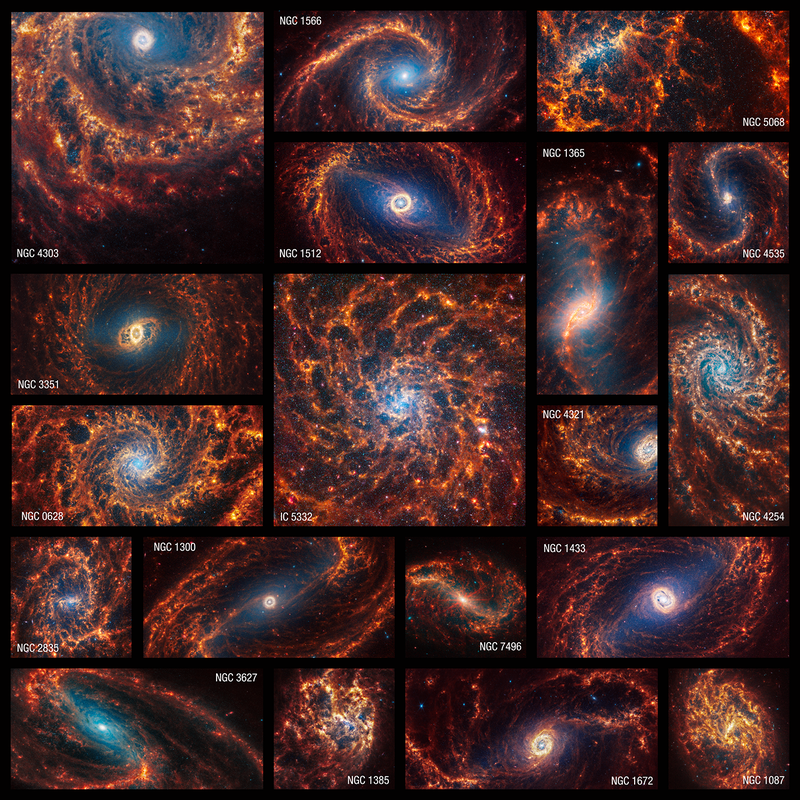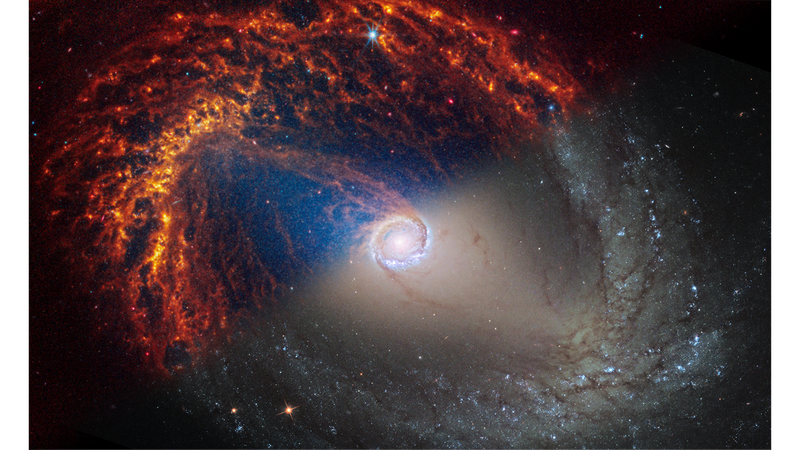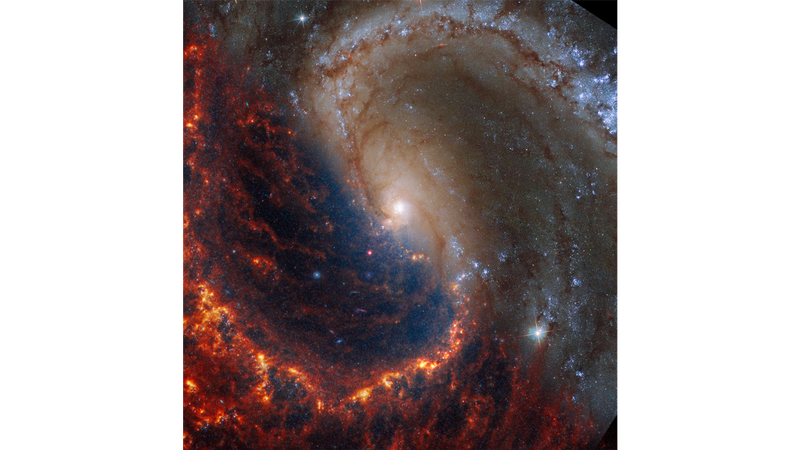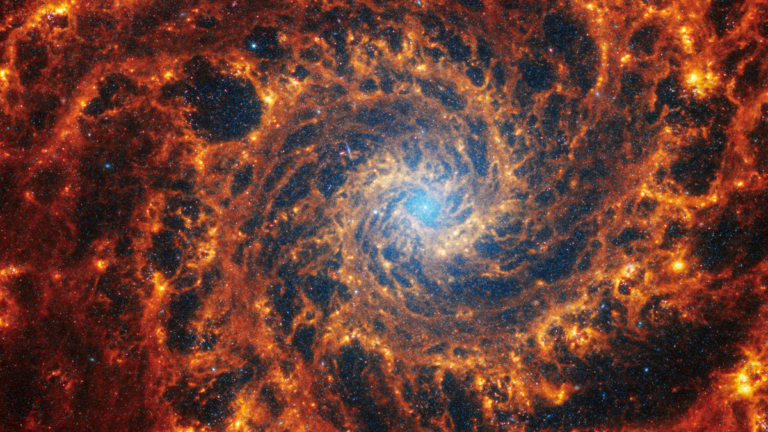JWST Captures Images Displaying the Swirling Arms of 19 Spiral Galaxies
The stars, dust, and gas swirling around black holes could reveal the origin of some our universe’s most intricate structures.
New images of 19 nearby face-on spiral galaxies have been unveiled by astronomers using the James Webb Space Telescope (JWST). These galaxies, seen in a combination of near- and mid-infrared light, are truly captivating. Their swirling arms, filled with stars arranged in a mesmerizing whirlpool pattern, exhibit vibrant colors and emit radiant light. The European Space Agency (ESA) highlights that the most visually stunning spiral galaxies are those observed face-on, where their spiral arms and bulge are clearly visible.
To create these images, a wealth of data collected over several years from various telescopes has been meticulously combined. This comprehensive approach provides a more detailed understanding of the formation of these spiral galaxies and their captivating nature.
Thomas Williams, a postdoctoral researcher from the University of Oxford in the United Kingdom, expressed the team’s constant state of awe and excitement when faced with the intricate details captured in these images.
Tracing spiral arms
The new images taken by JWST’s Near-Infrared Camera (NIR-Cam) reveal a multitude of stars, depicted in shades of blue. Among them, certain stars are clustered closely together, while others are scattered along the spiral arms.
Additionally, the data collected by the telescope’s Mid-Infrared Instrument (MIRI) highlights the presence of luminous space dust surrounding and interspersed between the stars. Furthermore, it showcases stars that are in the process of formation, as they remain enveloped in the dust and gas that nourish their development.

In a statement, physicist Erik Rosolowsky from the University of Alberta in Canada stated that these are the locations where we can discover the most recent and largest stars in the galaxies.
The gas and dust depicted in the JWST images also exhibit large, spherical shells. The team suggests that these cavities might have been formed due to the explosion of one or more stars, resulting in the creation of massive gaps in the interstellar material.
Additionally, the spiral arms in the images display extended regions of gas that appear in shades of red and orange.
Rosolowsky further explained that these structures tend to exhibit a consistent pattern in specific parts of the galaxies. He compared them to waves, and their spacing provides valuable information about how a galaxy distributes its gas and dust.
By conducting further research on these structures, we can gain significant insights into the processes of star formation, maintenance, and cessation in galaxies within our universe.
Center of the galaxy
Spiral galaxies are thought to undergo growth from the inside out, with stars initially forming at the core and then spreading along the arms, eventually spiraling away from the center. The distribution of stars within the galaxy can also provide insights into their ages. Typically, the younger stars are found farther away from the core, while the areas closest to the core, which exhibit a blue spotlight-like illumination, are believed to contain the older stars.

Furthermore, the presence of pink and red spikes in the galaxy cores could indicate the existence of a massive and active black hole. Eva Schinnerer, a staff scientist at the Max Planck Institute for Astronomy in Germany, suggests that this observation is a clear indication of the presence of an active supermassive black hole. Alternatively, it is possible that the star clusters located towards the center of the galaxy are exceptionally bright, causing saturation in that particular area of the image.
Sinking PHANGS into space
The collection of images is part of a well-established project known as PHANGS–Physics at High Angular resolution in Nearby GalaxieS. It has garnered support from a global community of over 150 astronomers. Prior to the creation of these images by JWST, PHANGS had already been analyzing vast amounts of data obtained from NASA’s Hubble Space Telescope, the Very Large Telescope’s Multi-Unit Spectroscopic Explorer, and the Atacama Large Millimeter/submillimeter Array. These previous observations were conducted using ultraviolet, visible, and radio light. The recent near- and mid-infrared contributions from JWST have provided significant evidence for the study of spiral galaxies.

Janice Lee, a project scientist for strategic initiatives at the Space Telescope Science Institute in Maryland, expressed her awe at Webb’s new images, stating, “They are truly exceptional. Even researchers who have dedicated decades to studying these same galaxies find them mind-blowing. The images reveal intricate details such as bubbles and filaments at the smallest scales ever observed, shedding light on the star formation cycle.”
In addition to these groundbreaking images, the PHANGS team has also unveiled the most extensive catalog to date, consisting of approximately 100,000 star clusters. This catalog holds the potential to enhance astronomers’ understanding of the life cycles of stars.
“Stars can endure for billions or even trillions of years,” remarked Adam Leroy, an astronomer from Ohio State University. “By meticulously cataloging various types of stars, we can develop a more comprehensive and dependable perspective on their life cycles.”
This article is republished from popsci.com under a Creative Commons license. Read the original article.




0 Comments